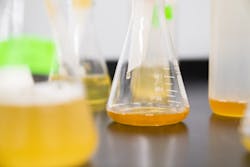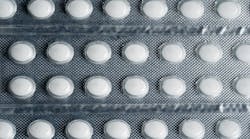Pharmaceutical manufacturing is a process-driven, strictly regulated industry. In the best-case scenario, a manufacturing mistake can be costly; at worst, it can be life-threatening, especially if the product made its way to consumers. The industry must therefore follow a number of guidelines set by the Food & Drug Administration (FDA) such as the Current Good Manufacturing Practices (cGMP).
Product quality is at the core of cGMP, which assure proper design, monitoring and control of manufacturing processes and facilities. cGMP also provide guidance for how to obtain quality raw materials, preferred management systems and processes for maintaining strong laboratory testing procedures. All factors that play a key role in the safety and effectiveness of pharmaceutical production.
Adherence to cGMP is a must for manufacturers, and while quality and safety are top priorities in the pharmaceutical industry, these guidelines do introduce additional hurdles in the manufacturing process.
Accelerating processes and outputs without compromise
The wide range of active pharmaceutical ingredients (APIs) used, and the fact that even the smallest contaminant can drastically offset results, has made the verification of raw materials one of the most critical steps of the production process. Verifying materials typically entails sending samples to labs outside the manufacturing floor to a team of highly trained professionals to analyze the raw materials.
While this is a highly accurate verification process, it is plagued with bottlenecks and often stalls production. This was an issue when regulations required the sampling of a statistical number of containers for a delivered material (sqrt n+1), but now the industry is moving towards verification of every container of a delivered material (100 percent material verification). While 100 percent material verification is a trusted approach to strengthen production safety, it is important to remember that this requirement means facilities will need to verify one drum or 1,000 drums per day depending on the size of delivery. Now, the collection of batches to test will be increasingly time consuming and labor intensive, which will exacerbate the bottleneck problem.
Further down the production line is another obstacle. Solvent drying is the complete or partial removal of a solvent or solvents from an API or intermediate. This process can occur in a variety of process vessels, including vacuum dryers, tray dryers and rotary dryers. In the past, the success of solvent drying could only be tested at the end of the process; again, requiring samples to be sent to a separate lab for testing. If a test failed, the product had to re-enter the drying process, which leads to lagging production times and the potential of over-drying the solvent resulting in the loss of a batch.
Given the sheer mass of test batches, it is no longer sustainable to assign the testing of raw materials and drying samples to separate laboratories. Pharmaceutical manufacturers need new tools that can accelerate the verification process without compromising accuracy of results.
Technologies rising to the challenge
Technological advancements are being developed to bring the power — and accuracy — of the lab to the manufacturing floor. For example, new spectroscopy technology is eliminating the need for wet chemistry testing allowing raw material ID and other analyses to take place on the warehouse floor instead of a lab. Those in charge of handling inventory and receiving shipments of raw materials can quickly test a sample using a user-friendly, portable device to verify materials such as ionic salts, like sodium chloride and potassium chloride that are used extensively in buffers, injectables and biologics. In addition to accelerating raw material verification, these tools minimize the risk of cross-contamination by analyzing the material in its original packaging and eliminating the need to transport the materials through multiple locations.
On the other end of the production line, process mass spectrometers can accurately measure individual solvent concentrations in multiple dryer vents to monitor the drying process. By gaining a better understanding of the emissions from APIs on the drying tray, manufacturers can quickly make adjustments to temperature and heating durations. In addition to mitigating the risk of lost product due to over-drying, when used appropriately, process mass spectrometers can also accelerate the production process while limiting the dependence on time consuming offline testing such as Loss on Drying (LOD). This online method minimizes interruptions to the process, increases batch to batch quality and reduces drying times.
Accelerating innovation through simplification
Like many industries, technological advancement makes the pharmaceutical industry safer and more productive. With simplified testing and analysis, manufacturers can accelerate production times and innovation by minimizing the reliance on lab testing and assigning their highly-technical staff towards R&D. In turn, the time of factory floor workers can be used more valuably while staying compliant with cGMP and other regulations.




